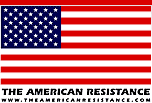Bordering on CAFTA - More Trade, Less Immigration
Articles
Debate leading up to Wednesday night’s narrow House passage of the Central American Free Trade Agreement (CAFTA) did not distinguish itself with nuance or refinement. Both supporters and opponents engaged in absurd hyperbole, claiming that the measure would either bring about massive job losses here and Dickensian slavery in Central America, or create huge new opportunities for American exporters and repulse Fidel Castro and Hugo Chavez. Of course, it won’t do any of those things....
...what they got completely wrong is the claim that increased trade will somehow reduce immigration pressures. Supporters of CAFTA, as they did with NAFTA, claimed over and over that free trade would “stop massive immigration to the United States” (in the words of Republican Dan Burton from Indiana), whereas Arizona Republican Jim Kolbe claimed that rejecting the agreement would lead to a “a rising tide of illegal immigration.”
Yet in the end, claims that NAFTA would dampen illegal-immigration pressures were decisively disproved. Our Mexican immigrant population, most of it illegal, exploded during the 1990s, from 4.2 million to 9.2 million, reaching a whopping 10.5 million by 2004. Some of this would have happened even without NAFTA — assuming we pursued the same policy of non-enforcement of the immigration laws — but it was supercharged by NAFTA.
In order to justify their opposition to CAFTA, some Republicans Wednesday night specifically cited the falseness of the immigration claims made by NAFTA’s supporters.
And indeed, the massive growth in immigration pressures from Mexico in the 1990s was not a failure of NAFTA, but an inevitable consequence. The way we’ll know that CAFTA is promoting economic development in Central America and the Dominican Republic (the scope of the treaty) will be when we see the same increase in immigration pressures. Counterintuitive as it might seem, economic development, especially agricultural modernization, always sets people on the move, by consolidating small farms into larger, more productive operations. These excess farmers then move to cities, where they get manufacturing or service-sector jobs.
But the fact that development cuts peasants loose from the land and compels them to move to cities doesn’t tell us whose cities they’re moving to. Immigration pressure, after all, is not the same as actual immigration. The problem with NAFTA was not that it promoted trade between the United States and Mexico but that neither country did anything meaningful to make sure that the excess Mexican peasantry moved to Mexico’s cities instead of ours. And CAFTA might actually create proportionately greater immigration pressures, because most of the agreement’s impact will be to make our exports more competitive there, with some 80 percent of imports from the CAFTA countries already entering our country duty-free. Despite this fact, the administration is not only continuing to refuse to enforce the immigration law but is making a high-profile push for a new guestworker/amnesty plan that would result in huge increases in illegal immigration.
If there is one lesson to be learned from NAFTA it is that free-trade agreements must be accompanied by muscular immigration controls, especially if they are reached with countries that are nearby or already send a lot of immigrants here. If the experience of NAFTA is repeated, and the immigration pressures unleashed by CAFTA are allowed to flood into the United States, the case for future free-trade agreements will be undermined.
The suspicion of some conservatives that free-trade pacts are the first step toward open borders is not without foundation. Mexico’s President Vicente Fox has become notorious for calling for an open border as the fulfillment of NAFTA. And the Wall Street Journal asserts a necessary connection between trade and immigration, calling most notably for an open-borders amendment to the Constitution allowing unfettered trade and immigration.
But the equivalency between trade and immigration is false. Immigrants are people, after all, not just labor inputs. As Henry Simons, a free-market pioneer at the University of Chicago, wrote in 1948: “To insist that a free-trade program is logically or practically incomplete without free migration is either disingenuous or stupid. Free trade may and should raise living standards everywhere . . . Free immigration would level standards, perhaps without raising them anywhere.”
The way forward, then, is clear: More trade, less immigration.
Read the complete article.

